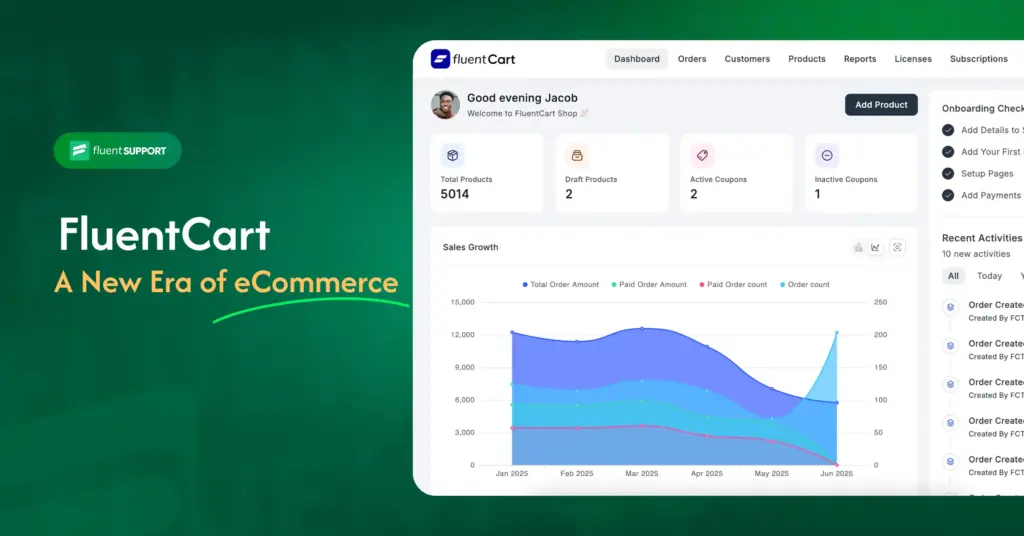
Customer relations has been the buzzword for quite a while now. Yet very few businesses actually know what it means to foster meaningful relationships with customers. Before you can even begin the process, you need to define customer relations. That is, you need to understand what a thriving customer relationship looks like.
In today’s market, customers have tremendous power. Most of your customers are just a tweet away from praising you or letting the world know your offerings are not worth it. As a business, there is very little you can do. But there is still hope.
Investing in valuable customer relations is the proven course if you want your business to succeed. Apart from the higher revenue, customer relations foster growth factors like customer loyalty and satisfaction. Concerning your success, these are the most crucial factors that you need to look out for. So how do you build lasting customer relations?
This article will cover customer relations, the keys to building lasting relations, and strategies to deploy to develop customer relationships.
What does customer relations mean?
Customer relations means, in broad terms, the process of building, managing and nurturing customer interactions with your business to ensure an enriched customer experience.
Every individual working with or alongside customers has the chance to contribute to this goal. The prospect of building valuable relationships spans from answering routine questions to long-term policies that enable continued success for customers.
Overall, a focused approach to ensuring a quality experience for your customers leads to smooth relationships.
Customer relations vs. Customer Service
Customer relations are distinct from customer service in the sense that customer relations don’t only offer service only when it’s needed. Customer relations officers and service reps are not the same.
Let’s look at a practical example to make things clear.
Suppose a customer contacted your business after facing difficulties with your product. Hearing the complaint and solving it is a service job. Following up on that request and checking whether the customer got what they were looking for is a customer relations job.
As a customer relations manager, you’re meant to monitor and set the tone for every customer interaction that occurs with your business. While service agents work for the same goal, their approach is less elaborate. Keeping this example in mind you can consider the following aspects to differentiate customer service from customer relations.
Scope: Customer service typically refers to the assistance provided to customers to help them with a particular problem or issue they are experiencing. On the other hand, customer relations is a more holistic approach to managing the entire relationship between a company and its customers.
Focus: Customer service is primarily focused on resolving individual customer issues, while customer relations is more focused on building and maintaining a positive overall relationship with customers.
Timeframe: Customer service interactions are usually short-term, focusing on addressing immediate needs or concerns. In contrast, customer relations involves a longer-term strategy for nurturing and growing customer relationships over time.
Strategy: Customer service is usually reactive, responding to customers when they have a problem or issue. In contrast, customer relations is proactive, seeking to create positive interactions with customers and anticipating their needs.
Ownership: Customer service is often the responsibility of a specific department or team within a company, such as a call center or support team. Customer relations, on the other hand, is typically viewed as the responsibility of the entire organization, with everyone playing a role in building and maintaining positive customer relationships.
Benefits of positive customer relations
Before applying what we learn here, you need to know why investing in customer relations is important. The benefits here are discussed briefly,
More retention, less churn
Focusing on customer relations means you are actively investing in engaging your customers. This, in turn, makes your customers feel valued. Customers are 2X more likely to stick with a business if they feel valued.
So when your customers feel valued, it translates into improved retention rates and less churn for your business.
For instance, an experience from my vacation fits the bill nicely. I stayed at two places during my week. In both places, I needed some supplies that weren’t available on hand.
Place #1 didn’t offer much help. I had to ask multiple times to get directions to where I could get the things I needed. They very reluctantly pointed me in the right direction, and that’s about it.
Place #2, on the other hand, capitalized on the opportunity. As I asked them for directions, they offered to bring it in for me. I said it was a bit urgent, and then they did the unthinkable.
They called up a staff member who was already out to bring in my things. They didn’t even charge me for the supplies. Which wasn’t too much of an expense, but they didn’t have to!
After they delivered the things to my room, they even followed up with a call asking if everything was in order. I had never felt so great after a stay anywhere.
Guess where I’m planning my next getaway! Place #2 is my go-to now.
Customer Loyalty
The clearest benefit of customer relations is developing customer loyalty. It’s been shown that customers are willing to go out of their way to keep buying from people they trust. They’ll take the extra drive/inconvenience over dealing with someone they don’t trust.
So as a business, you need to value this trust the most. Building trust takes a lot of time, and it can translate into steady relationships.
Take, for instance, Place #2!
I’ve been recommending them to my friends and family ever since I spent that spectacular week with them. They not only satisfied me as a customer, but they also turned me into an advocate. I proudly do their advocacy because I trust what they are doing. That should tell you enough about how positive relations foster loyalty and advocacy.
Higher Satisfaction
In this day and age, we are obsessed with keeping things professional and episodic. Businesses focusing on the more personal side of customers is definitely a breath of fresh air. Let’s consider another example for this one,
Which coffee shop are you more likely to go to?
One has a barista, who smiles, knows you by name, and remembers your order. Or, a place where there’s a new barista every day, who mispronounces your name and gets your order wrong even after repeating it 3 times?
If you’re not an Instagram “coffee lover”, you’ll probably want to go with the first place.
In this whole example, consider the fact that the quality of the coffee isn’t the point of conflict. Even if both places serve the exact same coffee, the place with the hearty barista is bound to do better.
That’s the power of investing in customer relations which gets you the most reliable form of customer satisfaction there is.
Offer the best support with ZERO costs. Installation is easy and setup is a breeze.
The two keys to building lasting customer relationships
While there are many strategies businesses use to invest in valuable relationships, two key factors are a must. These factors are the real precursors for creating meaningful customer relations. Without ensuring these, building relations is near impossible.
1. Understand and meet your customers’ hierarchy of needs
The hierarchy of needs concept was developed by Abraham Maslow. In it, he describes people’s needs as divisible into tiers. According to the concept, customers look to satisfy one tier of needs at a time. Only when all needs from a tier are met, do they consider the next tier.
For businesses, it’s crucial to identify this hierarchy as it pertains to your product or service. More importantly, a business has to accompany customers throughout the tiers to ultimately get to the top of the hierarchy.
Only after reaching the top do customers get the WOW! experience from your business. The journey to get to that WOW moment is your opportunity to build a positive relationship with your customer. When a customer sees your effort to make the purchase worthwhile, it automatically instills trust.
This trust is the foundation to build your relations. So understanding the hierarchy of customer needs is by far one of the most important in developing customer relations.
2. Prioritize consistency above all else
The only thing customers value more than discounts is transparency. Don’t get me wrong; discounts work in their own way. But it has nothing on consistency. Being consistent for your customers is easier said than done.
Mostly because there are multiple facets where customers interact with your business. So when it comes to being consistent, it’s not enough to consider one aspect of your business. The only way to appear consistent is to streamline every contact point with your business.
Great relationships start with reliability. When customers see equal effort on all fronts of your business, from products to support to onboarding, it conveys that reliability. The point of being consistent throughout is to create this reliability.
Once your customers find consistency and reliability, it sets the basis for your relationship with them. Prioritizing consistency above all else is what sets brands apart, making for meaningful customer relations.
Strategies to develop strong customer relations
So we’ve covered the foundations for developing strong customer relationships. Now it’s time to see check out the necessary steps to drive this home.
Invest in customer relations training
Your customers inevitably communicate with your employees. Hence, the outcome of those interactions depends largely on how your employees handle them. Meaningful interactions don’t start with a sale. It’s more about how the experience is to interact with your brand.
Customer service or support agents have an upper hand in this regard because they constantly interact with customers to offer help or smoothen out their experience. When it comes to maintaining customer relations, this aspect is grossly ignored.
So it’s a good practice to give customer relations managers regular training to align their strategies with the goals of your business. After all, positive customer relations are a byproduct of a stellar customer experience.
In order to streamline this process, it’s important to train your employees to reach a certain level of consistency and efficiency in managing customer interactions.
Create a fulfilling workplace for your customer relations team
After training, by far the most important aspect is providing a healthy and fulfilling workspace for your customer relations managers. The famous saying goes as
“Keep your employees in good shape to help customers get the best from them”.
When you take it at face value, it’s quite intuitive. Happier employees are productive employees. Studies have shown happier customer relations execs perform 12% better than their counterparts.
More productive employees mean smoother workflows, ultimately leading to satisfied customers and valuable relationships.
Improve first call resolution rate
First call resolution or FRT is a key metric to assess the efficiency of your relations team. FCR or first call resolution denotes the time spent on providing the first interaction with a human representative from your business.
Reducing the time spent here directly impacts satisfaction metrics. The reason behind it is quite simple if you think about it.
Customers love to feel valued. When you waste customers’ time in the process of getting in touch with you, being valued is the last thing they feel.
On the other hand, fast responses make it clear that you value everyone that comes in looking for help. Concerning building relations, this is a solid stepping stone to start on.
Create opportunities for self-service
Solving problems has its rush. While every customer won’t want to go through the hassle, educated ones will actually prefer solving things on their own. As a business, it’s your job to make that as easy as possible.
Having a self-help option for customers lets your customers evaluate the thought you put into your business.
Creating self-help resources takes a lot of thought and proactive effort. Only after gathering and evaluating customer feedback and product expectations can you make an effective resource for customers.
When you put in this effort, it shows. So when a customer isn’t forced to interact with you because of an issue, they’d rather talk to you about more engaging matters. These interactions are the driving force behind valuable customer relationships.
Show appreciation
Don’t miss out on a chance to appreciate your customers. As a business, it’s important to respect and value your customers. So whenever a customer puts out a good word about you or praises your products, show the gratitude that’s due.
Word of mouth is the most expensive marketing you can get as a business. When you acknowledge that, it shows you care about the people involved with you, and that’s the basis of many meaningful relationships in customer service.
Create a customer-first culture
One of the core strategies to foster positive customer relations is to create a customer-focused culture. A customer-focused culture means developing the mindset to offer the best experience for the customer under every circumstance.
Companies can create this mindset by offering guidelines and journey maps for customer relations managers. This not only makes it easier for them to zero in on the ultimate goal but adjust along the way for the best outcomes.
The other option is to educate every employee to maintain a customer-focused attitude. While this applies to customer service reps, it also applies to sales, management, and relations as well.
Wrapping Up
Customer relations like customer support is becoming a crucial part of the overall customer experience. In order to provide remarkable CX, it’s important to train and equip your employees. Not just your service reps but also your sales and customer relations teams as well.
Fostering positive relations with your customers is not easy. Alongside proper strategy and resources, you also need to cultivate the mindset that fosters customer relations.
Ultimately, every customer interaction is a chance to develop relations with your business. Your employees need to be prepared to identify these opportunities and make the best use of them as they arise.
Until next time, happy serving!
Start off with a powerful ticketing system that delivers smooth collaboration right out of the box.












Leave a Reply